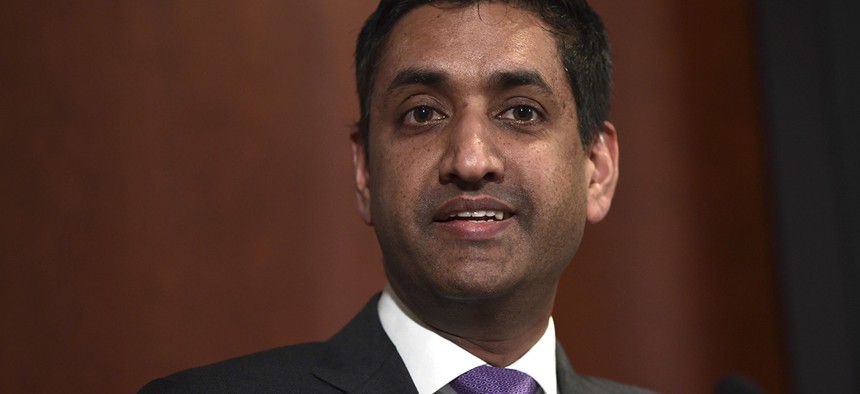Better Government Websites Build Trust with Citizens, Silicon Valley Lawmaker Says

Rep. Ro Khanna, D-Calif. Susan Walsh/AP
Rep. Ro Khanna's customer-experience focused bill would require agencies to go all digital by 2020.
Bringing Silicon Valley principles to federal websites would make it cheaper for agencies to interact with citizens and give people a better outlook on their government, according to one lawmaker.
“You talk to tech leaders and they say the single biggest thing you need to do is make it easy for users to use software, that that’s more important than technology,” Rep. Ro Khanna, D-Calif., said Tuesday in a conversation with reporters. “Why should [Congress] listen to them? Because tech brands are the most popular in the nation.”
Khanna, whose district encompasses much of Silicon Valley, said his exposure to tech industry innovators has given him a unique perspective on how people’s experiences impact their perceptions of products and services.
“These brands have huge approval ratings [because] they’re easy to use and people like using them,” he said. “Imagine if you could have that kind of experience with the federal government. It helps people trust government more [when] government work[s] better.”
Last week, Khanna and Rep. John Ratcliffe, R-Texas, introduced legislation that would require agencies to modernize their websites, improve customer experience online and encourage citizens to use digital portals rather than relying on paper and in-person interactions.
Under the 21st Century Integrated Digital Experience Act, agencies would have one year to upgrade websites to meet a set of minimum security and accessibility standards, and two years to roll out “digital options” for every in-person service.
It costs agencies between $40 and $63 on average each time they work with citizens face to face, but research found those same interactions would only cost $0.22 a piece if they occurred online, Khanna said. Even adding relatively simple applications to allow for online signatures and improve search functions could save the government a significant amount of time and resources, he said.
Federal tech leaders have long evangelized the benefits of streamlining citizen services, but Khanna noted digitization efforts often fall to the back-burner when more pressing issues arise.
Giving agencies compliance deadlines would force them to kick modernization initiatives into gear or run the risk of losing congressional funds, he said. The bill would also grant chief information officers additional authorities to push projects over the finish line, creating a more structured chain of command that could help cut costs even further.
“Some of these changes aren’t going to require a lot of funding so much as a better utilization of resources,” Khanna said. “A lot of the budget exists because of the [Modernizing Government Technology Act], the appropriations that Congress allocates. This is more about empowering these agencies to take those resources and be efficient.”
While agencies may have the funds to revamp their online presence, some might be short on people. The growing age gap in the federal IT workforce has led to a shortage of tech specialists trained in the latest tools and techniques.
Most national security-centric groups tend to be stocked with the tech talent they need, but many of the most citizen-facing agencies do not. For instance, a Nextgov analysis found the Homeland Security Department employs roughly 3.7 IT specialists over age 60 for each person under age 30, but in the Veterans Affairs Department, the ratio is nearly 19 to 1.
Khanna suggested agencies look to groups like the U.S. Digital Service if they don’t have the personnel to upgrade websites on their own, and if that’s not enough, he said he’d be open to Congress providing additional workforce resources.
NEXT STORY: GSA moves grant site



